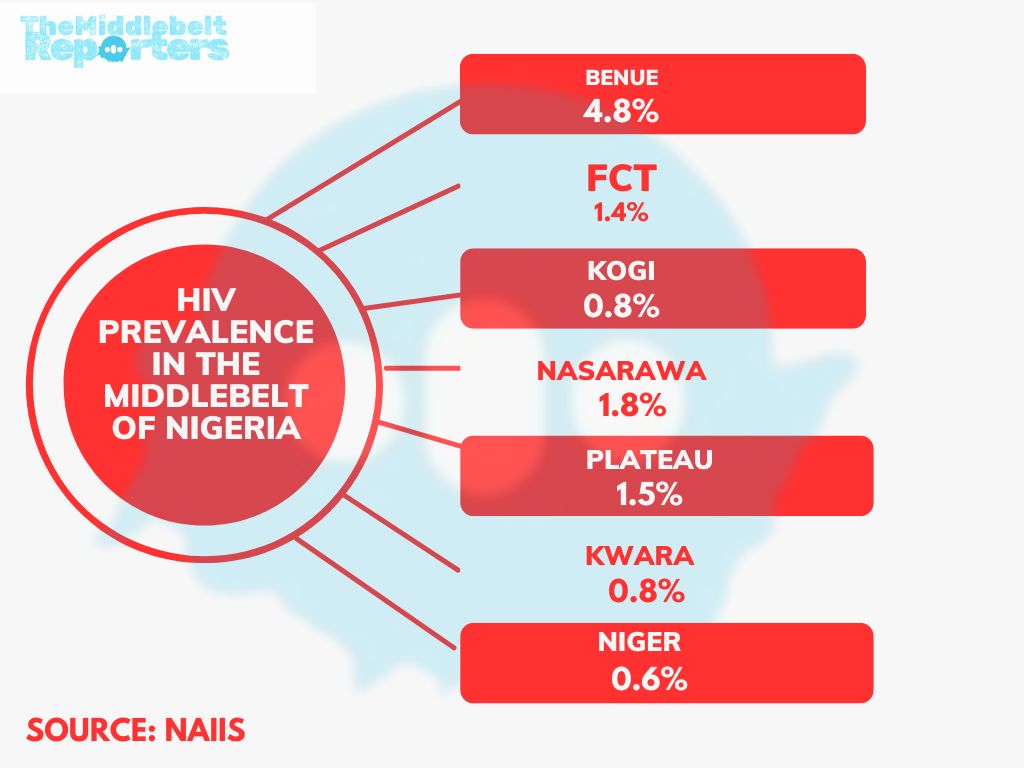The most recent findings from the Nigeria HIV/AIDS Indicator and Impact Survey (NAIIS) which was conducted in November 2019 indicate that there is a significant regional variation in HIV prevalence in the Middle Belt states of Nigeria.
The survey indicated that it reported a national HIV prevalence of 1.4% among adults aged 15-49. This survey was conducted in 2018, and data collection was completed in December.
In the Middle Belt states, the key statistics include:
- Benue: 4.8%
- FCT: 1.4%
- Kogi: 0.8%
- Nasarawa: 1.8%
- Plateau: 1.5%
- Kwara: 0.8%
- Niger: 0.6%
These figures explained that the prevalence is among adults aged 15-64 years. Where Benue has the highest rate at 4.8% in the region, Kogi and Kwara states have the lowest rates, both at 0.8%.
In Benue state, studies show that several factors contribute to their elevated HIV prevalence which includes, engaging in unprotected sex during cultural events and night parties.
Furthermore, the national prevalence is reported at approximately 1.4% according to the press release by UNAIDS on March 14, 2019. This survey provided a clearer understanding of HIV epidemic in Nigeria.



